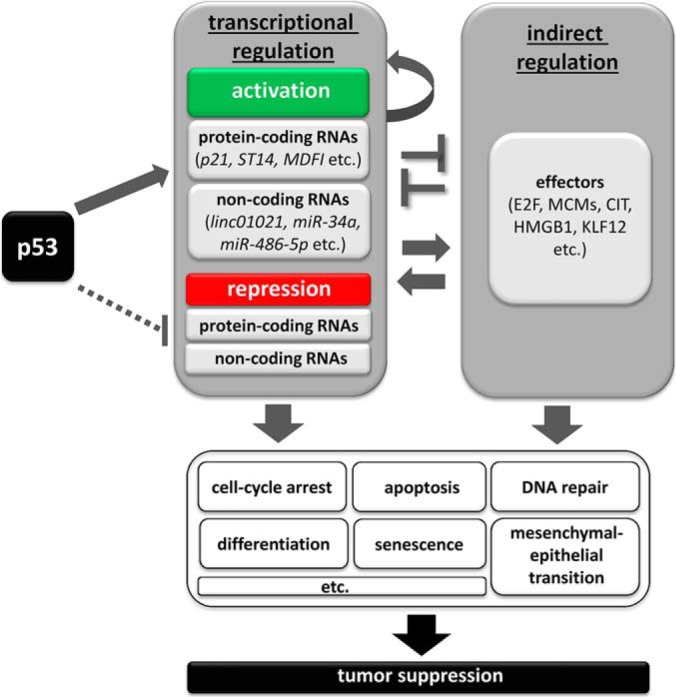Fig. 8.

Schematic model of effector pathways that mediate tumor suppression by p53. Upon activation, p53 regulates the transcription of mRNAs that encode proteins and/or non-coding RNAs, such as miRNAs and lncRNAs. p53 mainly acts as a transcriptional activator and to a minor extent as a transcriptional repressor. In addition, p53 indirectly regulates numerous effectors, for example E2F or MCM complex components via its direct target genes, such as p21 and miR-34a. Moreover, there is extensive crosstalk between direct and indirect p53 targets. The differential expression of direct and indirect p53 targets leads to the induction of specific cellular processes, such as cell-cycle arrest, apoptosis, or mesenchymal–epithelial transition, which suppress mediate tumor progression.
